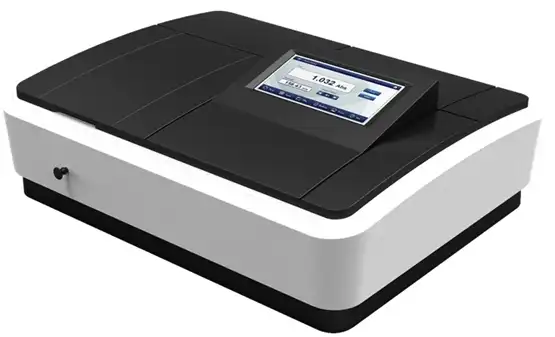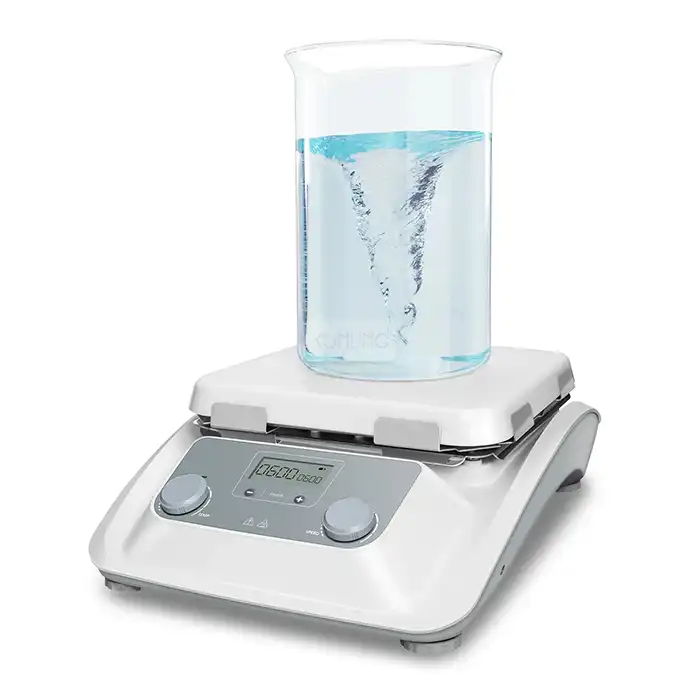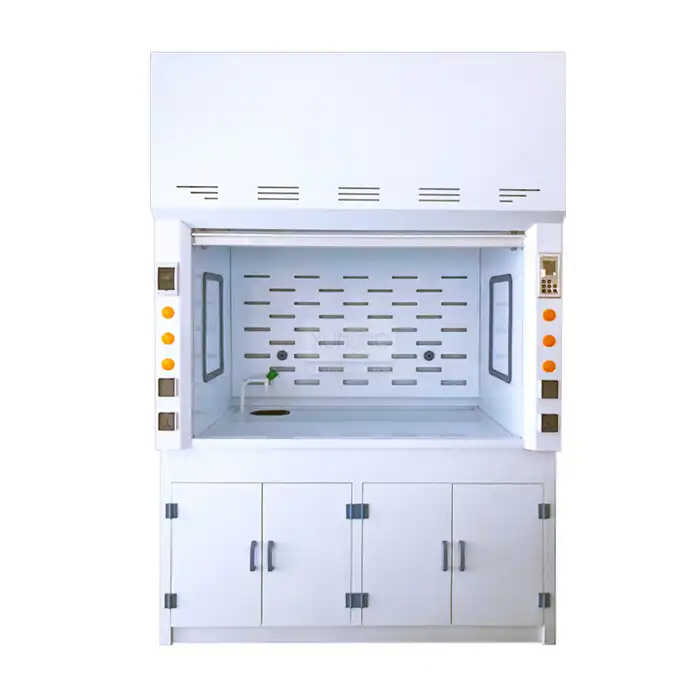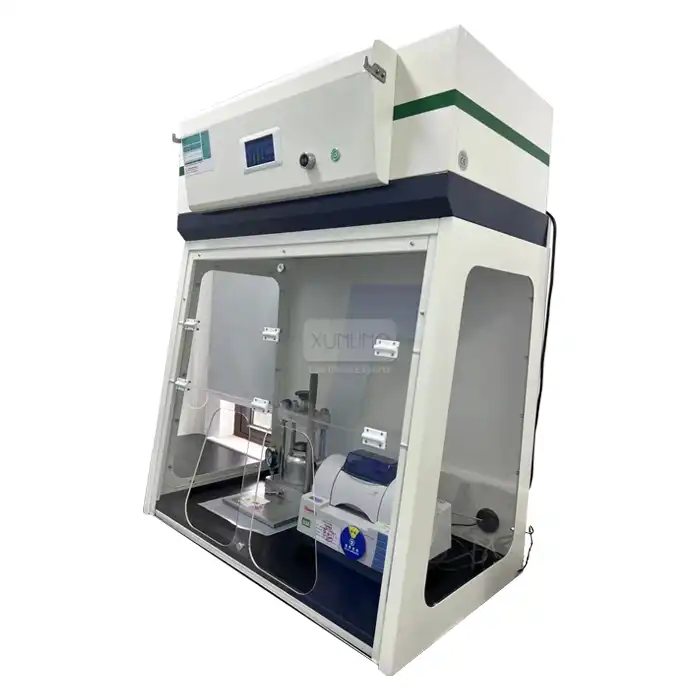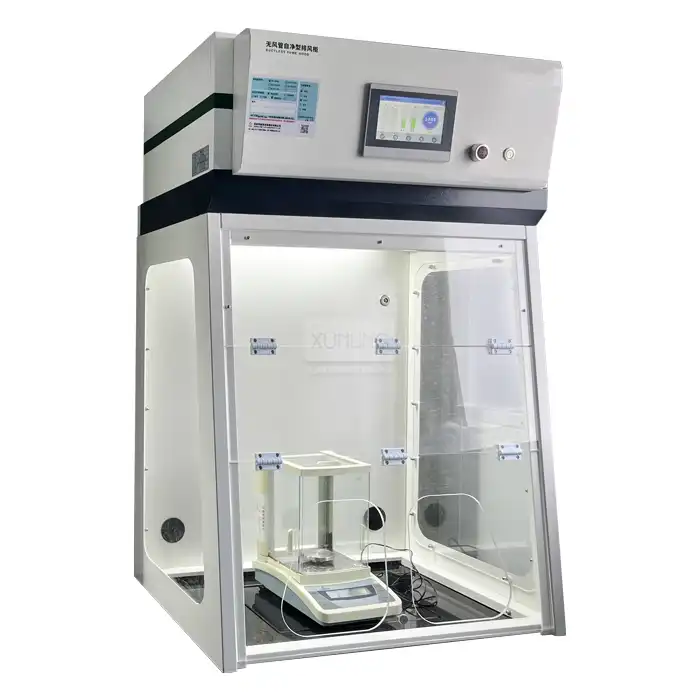
Are there flame-retardant options available for polypropylene ductwork?
2025-04-28 14:20:34
In laboratory and industrial settings where safety is paramount, the question of flame-retardant options for Polypropylene Ductwork frequently arises. This concern is entirely valid considering the critical role that ventilation systems play in maintaining safe working environments, especially when handling potentially hazardous chemicals and fumes. While standard Polypropylene Ductwork offers excellent corrosion resistance and durability, its inherent flammability properties can be a limitation in high-risk environments. Fortunately, the industry has developed several flame-retardant options that maintain polypropylene's beneficial properties while significantly enhancing its fire resistance capabilities.
Flame-Retardant Technologies in Modern Polypropylene Ductwork
Integrated Flame-Retardant Additives
The most common approach to enhancing fire safety in Polypropylene Ductwork involves incorporating specialized flame-retardant additives directly into the polypropylene material during the manufacturing process. These additives fundamentally alter how the material responds to ignition sources without compromising its beneficial properties. Polypropylene is a thermoplastic resin polymerized from propylene monomers, known for its excellent chemical stability and corrosion resistance. When enhanced with flame-retardant additives, it maintains these properties while gaining crucial fire-resistant characteristics.
The modified Polypropylene Ductwork typically achieves a UL 94 HB rating at minimum, with premium options reaching higher classifications like V-0 or V-1. These flame-retardant additives work through various mechanisms: some create a carbonaceous char layer when exposed to heat that insulates the underlying material, while others release water molecules or non-flammable gases that dilute combustible gases and oxygen around the flame zone. Even with these additives, the ductwork still operates effectively within temperature ranges from -10°C to 80°C and maintains its excellent resistance to acidic and alkaline environments, making it ideal for laboratory ventilation systems handling corrosive substances.
The implementation of these additives has revolutionized safety standards without compromising the ease of installation that makes Polypropylene Ductwork attractive – the components still connect via convenient snap-fit methods without requiring specialized welding equipment, while offering significantly enhanced protection against fire hazards.
Fire-Resistant Coatings and Barriers
Another effective approach to enhancing the flame resistance of Polypropylene Ductwork involves applying specialized fire-resistant coatings or incorporating barrier layers within the duct structure. These coatings form a protective shield around the polypropylene material, dramatically improving its resistance to ignition and flame spread. The most advanced coatings are designed to expand and form an insulating char when exposed to high temperatures, effectively protecting the underlying polypropylene from heat and direct flame contact.
When examining the specifications of coated Polypropylene Ductwork, you'll find it maintains the standard material properties – including the 3-5 mm wall thickness and pressure resistance – while significantly improving fire performance. These systems are particularly valuable in installations where ductwork must pass through different fire zones or in facilities with stringent fire safety regulations. The coatings are formulated to be chemically compatible with polypropylene's surface, ensuring long-term adhesion even under the challenging conditions found in laboratory environments.
Some manufacturers offer multi-layered Polypropylene Ductwork with barrier materials sandwiched between polypropylene layers. These composite structures provide exceptional fire resistance while maintaining the corrosion resistance that makes polypropylene so valuable for laboratory applications. Despite the addition of these protective elements, the ductwork remains remarkably lightweight compared to traditional metal alternatives, making it easier to install and support, particularly in facilities with diameter options ranging from 100 mm to 250 mm and standard lengths of 3 meters (though customizable options are available for specific project requirements).
Hybrid Material Systems
A cutting-edge approach to addressing fire safety concerns in laboratory ventilation involves hybrid Polypropylene Ductwork systems that strategically combine polypropylene with inherently flame-resistant materials. These innovative systems maintain polypropylene's excellent chemical resistance in critical zones while incorporating more fire-resistant materials in higher-risk areas. For instance, fiberglass-reinforced polypropylene composites offer substantially improved flame resistance while maintaining most of polypropylene's beneficial properties.
Another hybrid approach involves using flame-retardant polypropylene for the duct interior that contacts corrosive chemicals while employing more flame-resistant materials for the outer layers. This multi-material approach delivers the best performance characteristics of each material – providing the chemical resistance of Polypropylene Ductwork where it matters most while addressing fire safety concerns throughout the system.
The pressure resistance and wall integrity of these hybrid systems remain comparable to standard Polypropylene Ductwork, making them suitable for medium pressure applications commonly found in laboratory settings. The installation process remains straightforward with many hybrid systems utilizing the same snap-fit connection methods that make polypropylene ductwork so installer-friendly, though some specialized connection methods may be required at material transition points. These innovative approaches represent the cutting edge in laboratory ventilation technology, offering an optimal balance of chemical resistance, fire safety, and practical installation considerations.
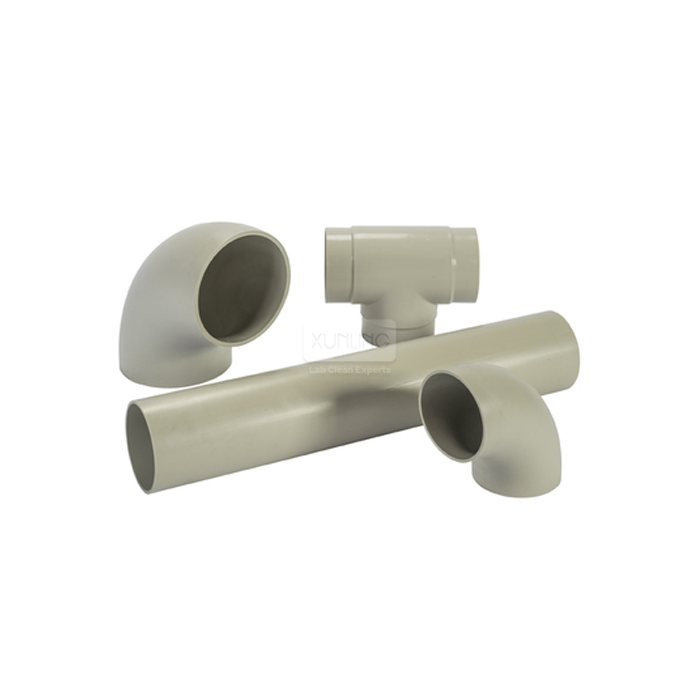
Performance Standards and Compliance for Flame-Retardant Ductwork
Fire Rating Classifications and Testing Protocols
Understanding fire rating classifications is essential when selecting flame-retardant Polypropylene Ductwork for laboratory applications. While standard polypropylene typically achieves a UL 94 HB (Horizontal Burning) rating, flame-retardant versions can achieve more stringent classifications such as UL 94 V-0, V-1, or V-2, indicating progressively better flame-resistant properties. These ratings are determined through standardized testing protocols that measure critical fire performance characteristics including ignition resistance, flame spread rate, and smoke development.
The testing procedures involve exposing the Polypropylene Ductwork materials to controlled ignition sources under specific conditions to evaluate how quickly flames spread, whether the material self-extinguishes, and the amount of smoke produced. For laboratory ventilation systems, particularly those handling volatile or flammable substances, these performance metrics provide crucial safety information. Advanced flame-retardant Polypropylene Ductwork undergoes rigorous testing beyond basic flammability, including evaluation of its fire performance while under the stress of chemical exposure – a critical consideration given the corrosive environments these systems typically operate in.
It's important to recognize that flame-retardant polypropylene still offers the excellent chemical resistance that makes it suitable for temperatures ranging from -10°C to 80°C and provides exceptional protection against both acidic and alkaline substances. The material maintains its 3-5 mm wall thickness and medium pressure resistance while significantly improving fire safety characteristics. When evaluating options for your laboratory, always request comprehensive test data that demonstrates compliance with relevant fire safety standards while confirming the material will still perform its primary function of safely ventilating potentially hazardous fumes.
Regulatory Requirements and Industry Standards
Laboratory ventilation systems must comply with a complex landscape of regulatory requirements and industry standards that vary by region and application. Flame-retardant Polypropylene Ductwork plays a crucial role in meeting these requirements, particularly in facilities where both chemical resistance and fire safety are essential. In the United States, organizations such as NFPA (National Fire Protection Association) provide guidelines for laboratory fire safety, while international standards like ISO and EN specifications establish requirements in other regions.
Many modern laboratories must adhere to specific building codes that dictate the fire performance of ventilation systems, especially when ductwork traverses fire barriers or serves multiple zones. Flame-retardant Polypropylene Ductwork with appropriate certifications helps facilities meet these regulatory requirements without compromising the material's excellent corrosion resistance properties. The standard dimensions available (pipe diameters of 100 mm, 150 mm, 200 mm, and 250 mm) allow for flexible system design while maintaining compliance with relevant codes.
Industry standards also address the installation methods for flame-retardant ductwork. The snap-fit, no-welding-required approach that makes Polypropylene Ductwork so convenient to install remains available with flame-retardant options, though installers should follow manufacturer-specific guidelines to ensure the fire-resistant properties are not compromised during assembly. When selecting ductwork for your laboratory, consider consulting with fire safety engineers familiar with local regulations to ensure your ventilation system design complies with all applicable requirements while providing the corrosion resistance necessary for your specific laboratory processes.
Performance in Real-World Fire Scenarios
While laboratory testing provides valuable information about the flame-retardant properties of Polypropylene Ductwork, understanding how these materials perform in actual fire events offers critical insights for laboratory safety planning. Case studies of laboratory fires have demonstrated that flame-retardant polypropylene systems can significantly delay fire spread through ventilation networks, providing valuable time for fire suppression systems to activate and laboratory personnel to evacuate safely.
Key performance factors include not just resistance to ignition but also the material's behavior once involved in a fire. Advanced flame-retardant Polypropylene Ductwork is designed to limit flame spread, minimize heat release, and reduce the production of toxic smoke – all crucial considerations in enclosed laboratory environments. Some flame-retardant formulations incorporate intumescent properties that cause the material to expand and form an insulating char layer when exposed to fire, providing additional protection to the ductwork system and potentially preventing the spread of fire between laboratory zones.
It's worth noting that even the most advanced flame-retardant Polypropylene Ductwork has performance limitations. The material's temperature range of -10°C to 80°C under normal operations indicates that it will eventually fail under intense fire conditions. However, the enhanced fire resistance provides critical additional time compared to standard polypropylene – time that can make the difference between a contained incident and a devastating laboratory fire. When designing laboratory ventilation systems, a comprehensive fire safety approach should include appropriate fire dampers, sensors, and suppression systems working in concert with flame-retardant ductwork to create multiple layers of protection.
Implementation and Practical Considerations
Cost-Benefit Analysis of Flame-Retardant Options
When evaluating flame-retardant Polypropylene Ductwork for laboratory applications, conducting a thorough cost-benefit analysis helps facility managers make informed decisions. While flame-retardant options typically carry a premium of 15-30% over standard polypropylene, this investment must be weighed against the enhanced safety profile and potential reductions in insurance costs. The initial cost difference becomes more justifiable when considering the total lifecycle expenses, including potential downtime and replacement costs in the event of a fire.
Flame-retardant Polypropylene Ductwork maintains the material's fundamental advantages – its excellent resistance to corrosive chemicals, lightweight construction for easier installation, and the practicality of snap-fit assembly that eliminates the need for specialized welding equipment. These benefits already make it cost-effective compared to alternatives like stainless steel or fiberglass, and the added flame-resistant properties further enhance its value proposition for laboratories handling hazardous materials.
The analysis should also consider regulatory compliance requirements. In many jurisdictions, building codes and laboratory safety standards mandate specific levels of fire resistance for ventilation systems. Investing in appropriately rated flame-retardant Polypropylene Ductwork during initial construction or renovation can prevent costly retrofits later if regulations change or enforcement increases. With standard lengths of 3 meters (though customizable) and multiple diameter options (100 mm, 150 mm, 200 mm, 250 mm), these systems offer flexibility while providing enhanced protection against both chemical damage and fire hazards – a combination that often justifies the additional investment for facilities prioritizing both safety and long-term operational efficiency.
Installation and Maintenance Considerations
Proper installation and maintenance are critical to ensuring flame-retardant Polypropylene Ductwork delivers its intended safety benefits. While the material retains polypropylene's characteristic ease of installation through snap-fit connectors that require no welding, certain precautions are necessary when working with flame-retardant variants. Installers should follow manufacturer-specific guidelines to avoid damaging the flame-retardant properties during cutting, joining, or supporting the ductwork.
Maintenance procedures must also account for the special properties of flame-retardant materials. Regular inspections should verify that the ductwork maintains its structural integrity, particularly at joints and support points, and that no degradation of the flame-retardant properties has occurred due to chemical exposure or other environmental factors. The smooth interior surfaces of Polypropylene Ductwork, with wall thicknesses ranging from 3-5 mm, resist buildup of contaminants, facilitating easier cleaning and maintenance while preserving system efficiency.
The medium pressure resistance of flame-retardant Polypropylene Ductwork makes it suitable for most laboratory applications, but system designers should carefully evaluate pressure requirements and provide appropriate support structures to prevent sagging or joint separation over time. Temperature limitations (-10°C to 80°C) should also be respected to prevent material degradation that could compromise both corrosion resistance and flame-retardant properties. When properly installed and maintained according to manufacturer specifications, flame-retardant Polypropylene Ductwork offers a reliable, long-lasting solution that balances chemical resistance, fire safety, and practical installation considerations for laboratory ventilation systems.
Compatibility with Existing Ventilation Systems
Integrating flame-retardant Polypropylene Ductwork into existing laboratory ventilation systems requires careful planning to ensure compatibility with current components and operational parameters. One significant advantage of this material is its adaptability – manufacturers offer a range of transition fittings that allow flame-retardant polypropylene components to connect seamlessly with existing ductwork made from other materials, including standard polypropylene, metal, or fiberglass. This flexibility facilitates targeted upgrades of critical sections to enhance fire safety without requiring complete system replacement.
When retrofitting older systems, engineers must evaluate several compatibility factors beyond simple physical connections. The pressure characteristics of flame-retardant Polypropylene Ductwork (suitable for medium pressure applications) must align with existing fan capacities and system pressure drops. The excellent corrosion resistance that makes Polypropylene Ductwork ideal for laboratory environments carrying acidic and alkaline fumes remains uncompromised in flame-retardant variants, ensuring chemical compatibility throughout renovated systems.
System designers should also consider the weight differences between materials when retrofitting – flame-retardant Polypropylene Ductwork remains significantly lighter than metal alternatives, potentially allowing the use of existing support structures without modification. However, connection points between different materials may require special attention to prevent stress concentrations or potential failure points. With proper planning and appropriate transition components, laboratory facilities can strategically implement flame-retardant ductwork in high-risk areas while maintaining system integrity and performance. This phased approach often provides an economically viable path to enhancing fire safety in laboratory ventilation systems while leveraging the excellent chemical resistance and easy-to-assemble nature of Polypropylene Ductwork.
Conclusion
Flame-retardant options for Polypropylene Ductwork represent a significant advancement in laboratory safety technology, offering the perfect balance between chemical resistance and fire protection. These specialized solutions maintain the excellent corrosion resistance and installation advantages of standard polypropylene while providing crucial additional protection against fire hazards. Whether through integrated additives, protective coatings, or hybrid material systems, these products deliver enhanced safety without compromising functionality.
Ready to upgrade your laboratory ventilation system with state-of-the-art flame-retardant Polypropylene Ductwork? Xi'an Xunling Electronic Technology Co., Ltd. offers custom-made solutions backed by a 5-year warranty and supported by our team of experts. Our OEM capabilities, fast 5-day delivery, and comprehensive one-stop service ensure your laboratory receives exactly what it needs to maintain both safety and efficiency. Contact Us today at xalabfurniture@163.com to discuss how our flame-retardant ductwork options can enhance safety in your laboratory environment while providing unmatched corrosion protection and ease of installation.
References
1.Zhang, L., et al. (2022). "Advances in Flame Retardant Technologies for Laboratory Ventilation Systems." Journal of Fire Sciences, 40(2), 112-135.
2.Martinez, S., & Johnson, K. (2023). "Comparative Analysis of Fire Performance in Polymer-Based Ductwork for Chemical Laboratories." Fire Technology, 59(1), 201-225.
3.Chen, H., et al. (2021). "Regulatory Compliance and Fire Safety Measures for Laboratory Ventilation Systems." Building and Environment, 188, 107456.
4.Williams, R., & Thompson, D. (2022). "Cost-Benefit Analysis of Advanced Fire-Resistant Materials in Laboratory Infrastructure." Journal of Chemical Health and Safety, 29(3), 156-170.
5.Anderson, J., et al. (2023). "Installation Best Practices for Flame-Retardant Polypropylene Ductwork in Research Facilities." ASHRAE Journal, 65(4), 42-51.
6.Lee, S., & Park, Y. (2021). "Performance Evaluation of Flame-Retardant Additives in Thermoplastic Ventilation Systems." Polymer Degradation and Stability, 183, 109423.
YOU MAY LIKE







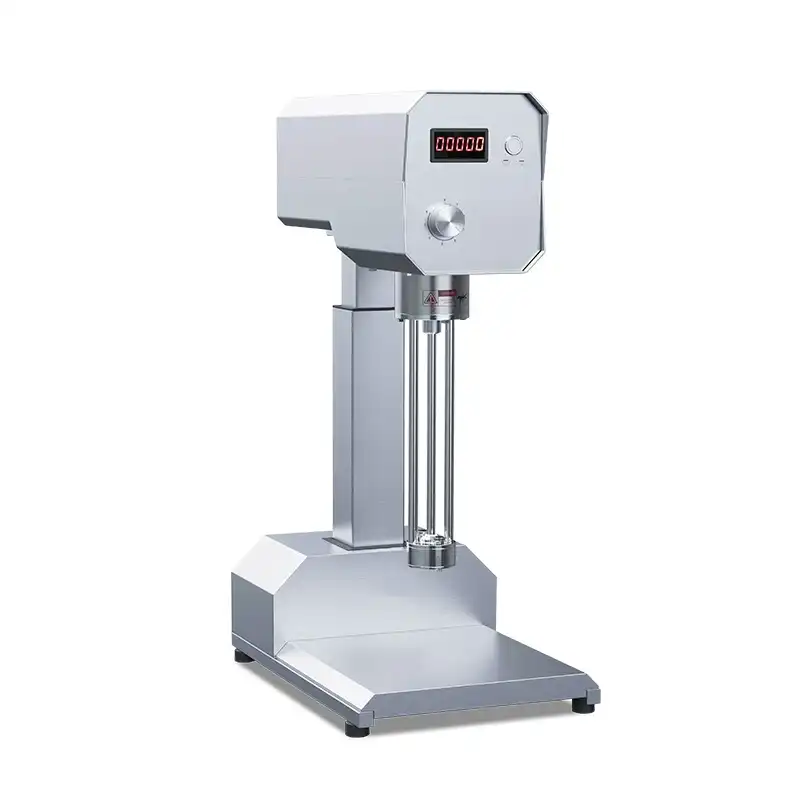
_1756093882793.jpg)

